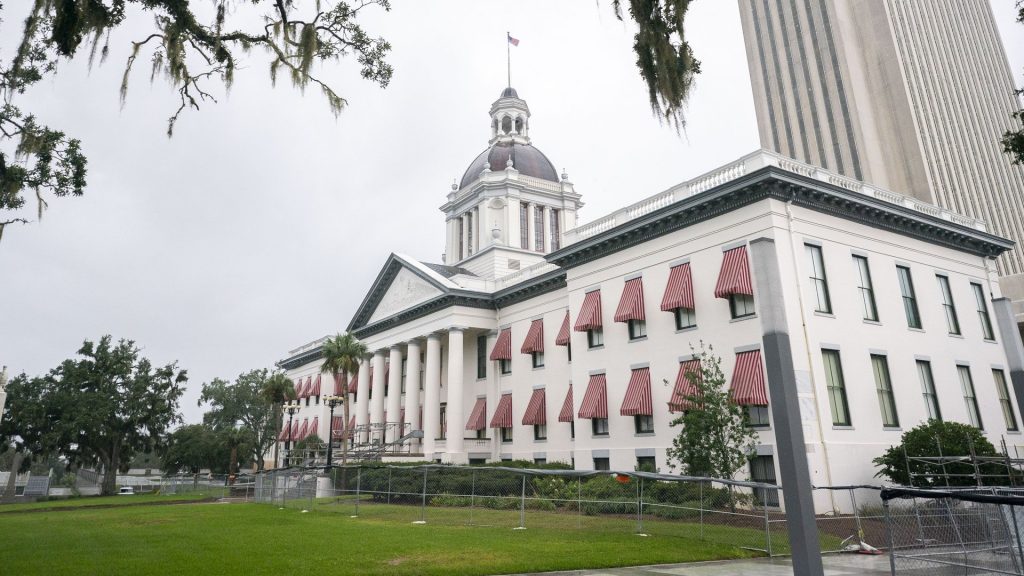Florida residents opposed a $7B electric rate hike. Regulators OK’d it anyway

Twelve million Floridians will see higher electric bills in the coming years after state regulators approved a $7 billion rate hike. Following months of legal maneuvering, the Florida Public Service Commission gave the green light on Thursday for Florida Power & Light (FPL) to increase the rates of 6 million customers through 2029.
The five-member utility regulatory board appointed by Gov. Ron DeSantis, R, voted for the settlement reached after FPL initially proposed a $10 billion rate hike in February. In 2029, a typical household consuming 1,000 monthly kilowatt-hours will pay $148 per month. That’s about $7 more for customers in northwest Florida and a $14 increase for the rest of FPL’s territory, which includes all of South Florida and the state’s East Coast.
The settlement did not have the support of the Florida Office of Public Counsel, which represents utility customers. FPL’s initial proposal also faced backlash from the AARP and various environmental and consumer advocacy groups.
In a press release, FPL said the new rates will ensure the grid remains reliable and allows the state to continue on a growth trajectory — a sentiment echoed by many public service commissioners when voting in the settlement’s favor.
Florida is not alone in raising electricity rates. Across the country, utility companies are asking regulators to approve rate hikes, and high electric bills have already sparked strong political backlash. The approved settlement also includes measures to manage the influx of data centers that the tech industry is intent on building to power artificial intelligence tools. The approval of FPL’s rate hike has raised concerns that Big Tech may be getting a better deal than the average Floridian.
Why is Florida’s electricity rate hike controversial?
Shelby Green, research and communications manager at the nonprofit watchdog group Energy and Policy Institute, said “this decision just kicks the can further down the road for affordability in Florida.”
Many residents already struggle to pay their monthly bills. In 2024, nearly 1.3 million FPL customer accounts, which translates to about 3 million people, had their power disconnected over nonpayment, according to legal filings. Florida is also one of only six states that do not prevent utilities from shutting off customers’ power during extremely hot or cold weather.
Green told Straight Arrow News that the disconnection data demonstrates that many Floridians are at their financial brink. The average FPL customer will pay close to $600 more per year for electricity in 2029 than in 2021, Green said.
The guaranteed profit margin FPL makes on infrastructure investments — known as a return on equity or ROE — is also set to increase to 10.9%, which opponents argue is too high.
What are commissioners and FPL saying?
The utility company said it needs to accommodate 335,000 new customers by the end of the decade. FPL said the rate increases help maintain reliability as more people move in, while minimizing consumer price impacts.
“Today’s vote enables FPL to continue to deliver some of America’s most reliable electric service and meet the needs of our fast-growing state — and we project will keep customer bills well below the national average through the end of the decade,” said FPL CEO Armando Pimentel in a press release.
Public service commissioners mostly agreed.
“The bill impacts are very reasonable for all customer classes,” said Commissioner Gary Clark.
However, several commissioners expressed hesitations about certain aspects of the plan. Commissioner Art Graham specifically mentioned the lack of buy-in from the Florida Office of Public Counsel and said, “It is not the dream settlement, but it is the one before us.”
All five commissioners ultimately voted to approve the rate hike.
How will Florida Power & Light handle data centers?
Green said the commissioners should have taken a different approach. It was a “disservice,” she said, to approve the settlement when commissioners had hesitations, rather than asking the company to make further adjustments.
When it comes to data centers, the proposal includes several ratepayer protections intended to ensure households don’t foot the bill for investments the utility company makes to power Big Tech projects. Those include requiring long-term contracts with data center developers, two years notice of termination and large exit fees.
Another feature, called “take or pay,” requires data center developers to pay for a portion of the electricity generated to power their project, even if it turns out they do not need to consume that much electricity.
In Green’s view, these aspects of the settlement were watered down compared to FPL’s February proposal. For example, she said the base rate paid by large loads was lowered, and the “take or pay” rate was also lowered from 90% to 70%, exposing Florida residents to a greater share of the risk associated with data center development.
“Customers will potentially end up having to pay for something they didn’t want in the first place,” she said.
The post Florida residents opposed a $7B electric rate hike. Regulators OK’d it anyway appeared first on Straight Arrow News.





